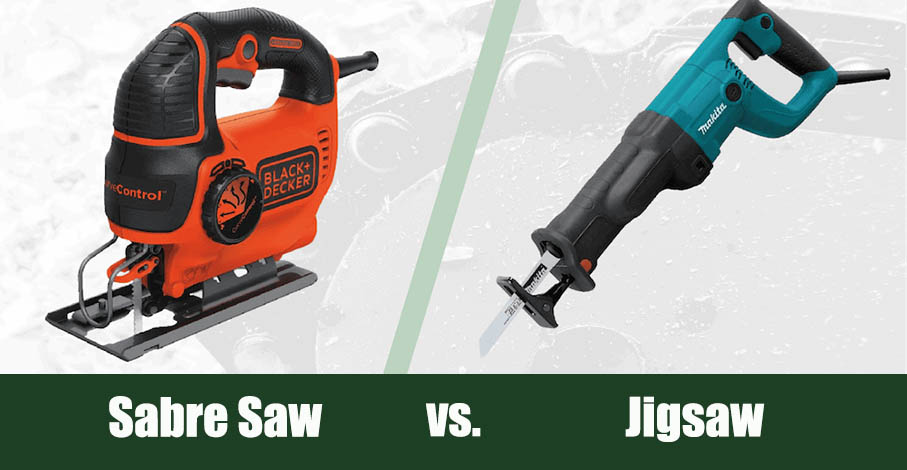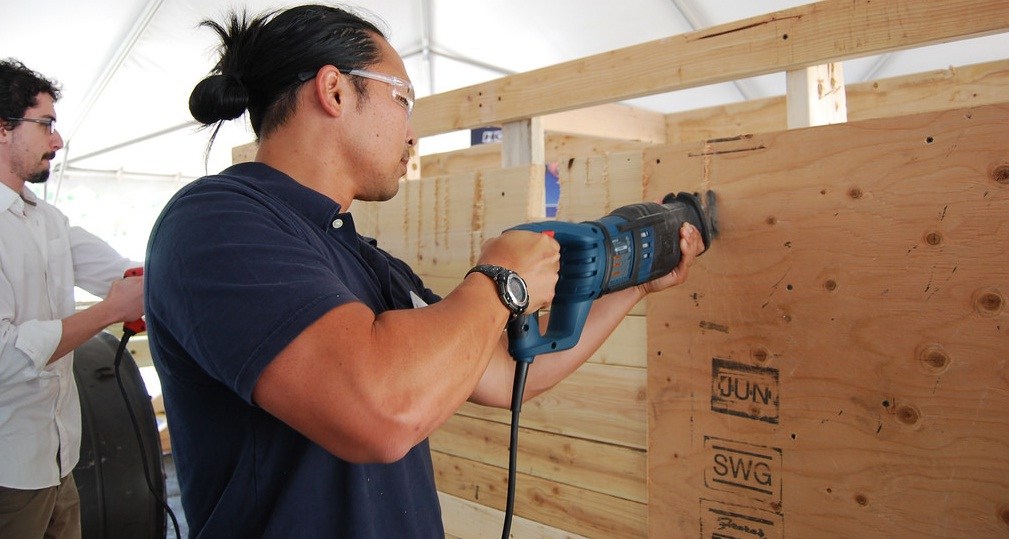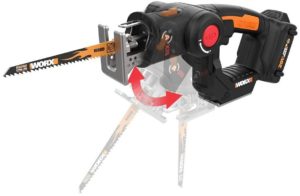Sabre Saw vs Jigsaw: Which is Best for Your Needs?
-
- Last updated:


If you are having a hard time deciding if a sabre saw or a jigsaw is the right fit for your needs, we are here to help. There are only a few differences between these two saws, and sometimes people refer to them incorrectly. Depending on what type of job you need to be done, choosing between a sabre or a jigsaw can be imperative.
Sabre Saw
A sabre saw is a powerful tool that can also be referred to as a reciprocating saw. The blade on the reciprocating saw is usually a bit wider than that of a jigsaw, and it is a toothlike blade. The sabre saw is very often used in a construction setting where demolition work is taking place. The cuts that a sabre or reciprocating saw make are rough and not always that precise.

A sabre saw tends to jump around quite a bit when it is cutting through rugged materials. Sabre saws are good at cutting through metal, plastic, and wood as well. When you think about somebody tearing a wall down in their home, you can picture them using a sabre saw.
- Stable and durable
- Great for demolition work
- Can cut through a variety of material
- Works fast and efficient
- Rough cut
- Does not work well for rounded curves
- No way to set the angle or degree of cut
- Tends to bounce around
Jigsaw
Now, if you think about that same person trying to tear a wall down with a jigsaw, they will likely be there a while. A jigsaw is built a bit differently than a sabre saw, and it is made for more precise work. Jigsaws are best used for cutting circular shapes, and they are straightforward and safe to use. You don’t need a table to use a jigsaw, and the portability of the jigsaw is a great feature.

Jigsaws generally have one handle on the top that a user can hold on to guide the saw. Since jigsaws are made for more precise cuts, they typically have a guide of some sort to help you follow along.
- Great for intricate cuts
- More accurate than other saws
- Can cut rounded curves well
- Safe and comfortable saw to use
- Does not work fast for demolition type projects
- Not always the most powerful saw
- Can be time-consuming to use
Which Saw Is Better?
Now that you know the difference between the two saws, it’s time to determine which saw would work better for you. There are a few things to consider when making this decision, and ultimately you only want to end up purchasing one saw for the job. Here are a few questions to ask yourself.
1. Material Being Cut
Sabre saws and jigsaws are capable of cutting through a variety of materials. If you are looking at PVC pipe, the Sabre saw is going to stand out as being a more accessible option. Since the jigsaw has a baseplate, you would struggle with cutting the PVC precisely as you need to. If, however, you are trying to cut a design in a piece of metal, the jigsaw would be your better option. Unfortunately, you cannot make your decision about which saw to buy based on material alone.
2. Type of Project
If you are looking at a demolition type project, there is no question that a sabre saw is the better choice. The sabre saw is a much rougher tool, and it won’t matter if your cuts are perfect on a demo job. Another thing that makes sabre saws so good for demolition is the ability to get into a corner. Since there is no plate on the bottom of this, saw you can make a corner cut to a stud or a pipe fairly easily. If you have any type of a woodworking project to complete that includes some kind of detail or round cuts, you need a jigsaw.
3. Features
When it comes to features the jigsaw is very likely going to win out. Jigsaws will have a lot more bells and whistles than a sabre saw because of the intricacies of the cuts it is designed to make. There are, however, jigsaw models that can function almost like a sabre saw, these will obviously be priced quite a bit higher. If you are interested in bells and whistles and a perfect final cut on your product, the jigsaw is the way to go.
4. Pricing
Like all tools, the pricing on the sabre (reciprocating) and the jigsaw will vary greatly. If you are going to choose a saw based on pricing alone, you will have a hard time finding much difference between the two. The base-level sabre saws retail for about the same as the base level jigsaw. One interesting option, if you are having a tough time choosing, is a jigsaw with an orbital blade.
The 2-in-1 Option
The WORX WX550L 2-in1 saw will also work as a sabre saw. Now, you’re not getting fantastic quality, but this is a great two for the price of one option if you can’t decide which way to go.

Conclusion
It’s hard to say if the sabre saw or the jigsaw is going to work best for your needs without knowing the task at hand. Reading through the differences and our buyer’s guide should give you a general indication as to what will work and what will leave you shopping for yet another saw.
Keep in mind that an essential part of choosing the correct saw is thinking about all steps of the project. Not just the start and the middle of the work but how you want the completed project to look as well. If your finished project is a beautiful carved handrail for a front porch, the sabre saw or reciprocating saw is going to leave you with a mess.
Related Reads:
- 10-INCH VS 12-INCH MITER SAW: WHICH ONE’S RIGHT FOR YOU?
- SINGLE VS DOUBLE BEVEL MITER SAWS – WHICH IS BEST FOR YOUR NEEDS?
Contents

